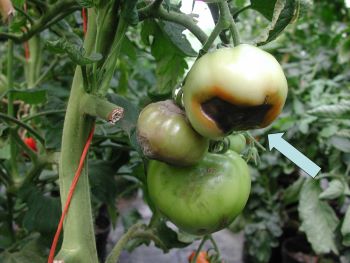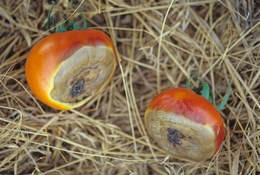The Epsom Salt Myth

Picture this in your head. Your garden is growing, the tomatoes, squash, and peppers are green, lush, and doing great. You have had blooms for a while, and those first fruits have set and are slowly growing. You check your tomatoes a few days later, after a period of hot days with low humidity, and notice that the biggest tomato has a brownish black lesion on the bottom. Blossom End Rot has invaded your garden. A quick Google search tells you the best cure for Blossom End Rot is Epsom salts, so you rush to the store to buy some. You have to save your tomatoes!!!! This is where I’m going to stop the story because while Google might tell you the Epsom Salts will stop your Blossom End Rot, this is one time where Google doesn’t know best. The Epsom Salt Myth needs to end here.
Blossom End Rot, or BER, is a common disorder found on tomatoes and is more common in certain varieties of tomatoes than others. While BER is most commonly found on tomatoes, it can also impact peppers, squash, and other vegetables in the garden. Unlike other issues commonly found in the garden, BER isn’t caused by a disease but rather by a lack of calcium when the fruit is forming. This lack of calcium in the fruit usually isn’t caused by a lack of calcium in the soil; our soils were formed from limestone, which is composed of calcium as one of its major components. This lack of calcium can come from a couple of sources.
- The first issue could be that the top of the tomato outgrew the root system during the early growing season, and while it’s cooler, the root system cannot keep up. Once we hit the hot days of summer, the root system can’t supply the plant with enough water and calcium to keep up. The plant then sends the water and calcium to the leaves instead of the fruit, causing BER. Heavy fertilization in the spring can cause this issue or make it worse.
- The second cause could be disturbance of the plant’s roots, leading to a lack of water being taken up by the plant. When weeding in the garden, try not to cultivate or use your hoe too deeply in the ground near the plants to avoid damaging the roots.
- The third cause, and most likely, is inconsistent watering. Keep the soil moist but not waterlogged. Sometimes we get heavy rain from thunderstorms, and we can do nothing about it but keep a consistent watering schedule and control what we can. Mulching around the plants can help maintain the soil's moisture levels and prevent weeds, lessening the work you have to do.
There is no benefit to adding Epsom salts to your tomatoes. Epsom salts contain magnesium sulfate and have no calcium, which helps prevent Blossom End Rot. Adding additional calcium to your soil through Tums or Rolaids is usually also of no benefit. If you are concerned about your soil and the calcium level, the best bet is to get a soil test or apply gypsum to your garden to add calcium. The best way to avoid BER is to water consistently, wait till fruit is setting on your plants to fertilize, pick varieties that are less likely to get BER, and avoid damaging the roots of the plants. Even if you have issues with Blossom End rot in your garden, remember that it will only last a short while (as painful as that can be) and will soon be gone for another year.
sulfate and have no calcium, which helps prevent Blossom End Rot. Adding additional calcium to your soil through Tums or Rolaids is usually also of no benefit. If you are concerned about your soil and the calcium level, the best bet is to get a soil test or apply gypsum to your garden to add calcium. The best way to avoid BER is to water consistently, wait till fruit is setting on your plants to fertilize, pick varieties that are less likely to get BER, and avoid damaging the roots of the plants. Even if you have issues with Blossom End rot in your garden, remember that it will only last a short while (as painful as that can be) and will soon be gone for another year.
The Epsom Salt Myth is one of the most common gardening stories I hear in the gardening world, and unfortunately, it seems to linger year in and year out. Remember to keep a consistent soil moisture level, and your chances of Blossom End Rot will decrease. If you keep a garden journal, write down what varieties you had issues with and try not to plant them in the future. Share these tips if you hear your gardening friends talk about Epsom salts and Blossom end rot.

Have questions? Contact our office where our Horticulture Extension Agent will assist you with questions.
Phone: (316) 321-9660
Email: callae@ksu.edu